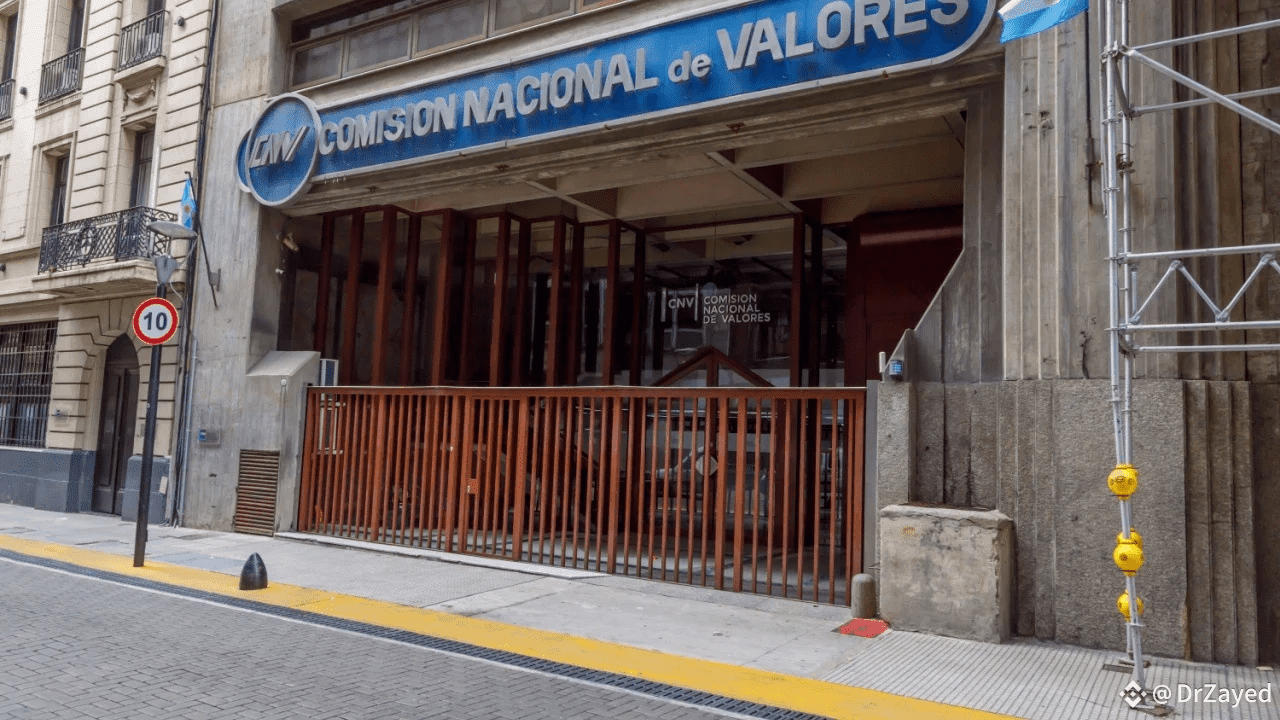📌Argentina Pioneers Stock Tokenization Under Regulatory Sandbox:
📌Follow our account @zayed for the latest crypto news.

In a groundbreaking move, Argentina has stepped into the frontier of digital finance by introducing a regulatory framework for the tokenization of real-world assets—especially stocks—within a controlled regulatory sandbox. This bold initiative, spearheaded by the country’s National Securities Commission (Comisión Nacional de Valores, CNV), positions Argentina as a regional trailblazer in asset tokenization. In this article, we’ll unpack what this means, how it works, and the far-reaching implications.
• A First-of-its-Kind Regulatory Framework:
On June 13, 2025, the CNV issued General Resolution No. 1069/2025, which marks the country's first official regulatory framework that legally recognizes the tokenization of real-world assets using blockchain or distributed ledger technologies (DLTs). Importantly, the regulation emphasizes that tokenization is purely a digital representation—not the creation of a new security—linked to underlying recognized financial instruments.
• Under the rules, the following instruments are eligible for tokenization:
Debt securities or certificates of participation in publicly traded financial trusts.
Units of publicly traded closed-end mutual funds whose assets consist of real-world or other eligible assets.
Tokenized securities must be managed by specialized entities using DLT solutions. Only registered virtual asset service providers (VASPs) are authorized to offer, custody, and manage these digital representations, ensuring both asset segregation and investor protection.
The regulation streamlines the process: tokenized securities are treated as part of traditional public offerings—removing the need for separate authorizations.
• A Sandbox for Innovation: Controlled, Inclusive, and Experimental:
To deploy this regulation prudently, Argentina implemented a one-year regulatory sandbox for asset tokenization, providing a supervised environment for experimentation and assessment. The sandbox allows real-world testing of tokenized asset issuance and is systematically evaluated and potentially extendable by the CNV.
During this period, CNV also plans to conduct public consultations to identify operational challenges, regulatory gaps, and risks, informing any future adjustments to the regime.
• Streamlined Token Issuance and Ownership Rights:
Under the sandbox framework, token issuers only need a general digitization permit, rather than separate approvals for each issuance. This reduces administrative hurdles considerably.
VASPs act as intermediaries, enabling token issuance, custody, and trading. Investors retain full ownership rights and may convert tokenized holdings back into traditional formats at any time.
Post-sandbox, no new tokenized issuances will be permitted under this regime; however, existing tokenized instruments remain valid. If a tokenized security fails to be digitized within two years of approval, it loses its qualification under the program.
• Strategic Vision: Positioning Argentina at the Frontier of Digital Finance:
Roberto Silva, the CNV president, described the initiative as a milestone—one that sets Argentina apart as a leader in digital finance innovation in Latin America. He emphasized the country’s ambition to remain at the forefront, leveraging technological advances while ensuring regulatory integrity.
Indeed, Argentina’s introduction of this sandbox places it among a select group of jurisdictions proactively exploring the tokenized future of finance—offering legal clarity and technological access in tandem.
• Broader Legal Context and Preparatory Foundations:
This initiative builds on existing legal and regulatory infrastructure. Key frameworks include:
Law No. 27,739, which sets forth foundational rules for crypto services and mandates that VASPs register and comply with AML/CFT standards.
Capital Markets Law No. 26,831, under which tokens representing financial assets must undergo authorization, prospectus submission, and investor protection disclosure under CNV oversight.
By aligning tokenized asset regulation with established securities law, Argentina preserves legal clarity while fostering innovation.
• Benefits: Liquidity, Inclusion, Transparency:
Tokenization offers possibilities like fractional ownership, higher liquidity, lower transaction frictions, and expanded investor inclusion. These benefits are particularly relevant in Argentina, where access to traditional investment markets may be limited for many.
In real estate, agriculture, and other sectors, tokenization enables broader participation and investment flexibility. Platforms such as Reental (real estate tokenization) and Agrotoken (agricultural tacitization) already showcase the potential.
By testing tokenization in a regulated sandbox, Argentina carefully paves the way for expansion of these models.
• Looking Ahead: Challenges and Long-Term Vision:
While the sandbox facilitates controlled innovation, several challenges remain:
Coordination across regulators: Implementation requires synchronized action between CNV, UIF (Financial Information Unit), BCRA (Central Bank), and other agencies. Proposals from the Argentine Fintech Chamber include multi-agency support for the sandbox to streamline governance.
Public trust and legal certainty: Clear definitions of “security tokens” versus “non-security tokens” are essential to prevent legal ambiguity and misclassification. (24 Hours World)
Scalability post-sandbox: After the experimental phase, regulators must decide whether and how to expand tokenization into widespread financial markets while safeguarding investor interests.
At the end of the sandbox period, based on data collected, Argentina may either extend, refine, or institutionalize the framework to enable broader tokenized financial markets.
• Conclusion: A Landmark Step Towards Digital Capital Markets:
Argentina’s launch of a regulated tokenization regime under a sandbox marks a critical inflection point in global financial evolution. By providing legal clarity, nurturing innovation, and enabling digital transformation—especially of stock and real-world asset markets—Argentina sets a pioneering example for Latin America and beyond.
This balanced model—bold in innovation, cautious in execution—could redefine how traditional assets are accessed, traded, and owned in the digital age. Argentina’s move might well catalyze wider adoption of tokenized finance across emerging markets, blending regulatory structure and technological vision in a new wave of capital market development.




